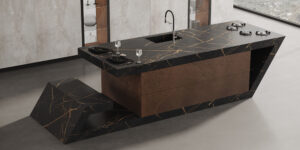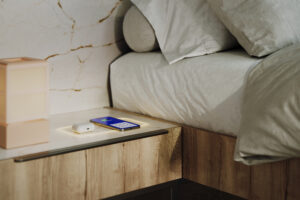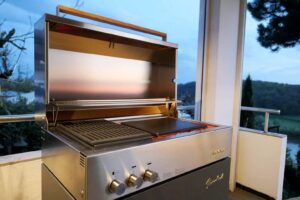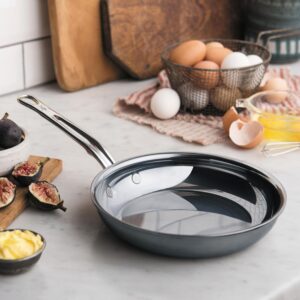This is the third article in this content series, where we are breaking down Ramey’s four spheres that define a premium brand. The first covered the challenge many companies face with falling into a commodity trap, and the second focused on the cornerstone of a premium brand, which is quality.
In this article, we will focus on the sphere of innovation. We believe that a premium brand has an entrepreneurial mindset and focuses on successful category disruption with new innovation. As Bob Iger, CEO of the Walt Disney Company said,
“If you’re in the business of making something, be in the business of making something great.”
At its core, we think about innovation as customer-centered, that is delivering a solution to a deep-rooted customer need. That also means innovating two steps ahead on behalf of your customers, understanding they most often than not have no clue what they need. This concept gets harder to execute every day because of the insatiable demands and expectations from today’s customer and emerging buyer. That’s why we believe a premium brand has an entrepreneurial mindset. These expectations and demands should drive passion, motivation, and inspiration. To quote Bob Iger again,
“Now more than ever: innovate or die. There can be no innovation if you operate out of fear of the new.”
In this article, we’ll explore a range of premium home brands that have demonstrated innovation in many different ways, from defining a category to leveraging thoughtful technology to meet a unique customer need.
Viking Range: Defining a Category
In 1980, the glimmer of an idea from entrepreneur and home builder Fred Carl was dreamed – a commercial-style range for the home kitchen. He knew from his time building and designing homes there was a customer and a potential market for serious at-home chefs who wanted more powerful options in the kitchen. After tirelessly meeting with commercial range manufacturers and door after door closing, he ultimately decided this idea and the development of it would be up to him, his team, and his community.
By 1987, Viking Range shipped the world’s first professional range for the home and a culinary evolution was born. Finally, home chefs had the equipment and power to cook like their favorite professional chefs. At the height of its success, Viking was recognized as one of the most sought-after brands in the world – second only to the Apple iPod.
For over 25 years in partnership with Ramey, the Viking brand became an American icon, one that redefined its category and changed the way we cook and entertain.
Leveraging Thoughtful Technology
The rise of smart home products has continued each year, but the balance of thoughtfulness with tech for tech’s sake is always a challenge. Designers and affluent homeowners alike look for technology that will not only add the element of convenience to everyday life, but is thoughtfully created and designed to integrate seamlessly. Furthermore, it’s vital that smart home technology does not date itself too quickly. Over the decades, we’ve seen how some ideas feel like a good one at the time, but years later they are irrelevant. Who still needs an in-home intercom system? While that feels like a dated example, the same could be said for refrigerators that tell you what ingredients you do and don’t have. However, there are some really interesting innovations that have recently launched, including strategic alliances that bring together two best-in-class brands and products to create something new for today’s consumer.

One such example is the rise of thoughtful technology integrated into surface materials. We’ve seen the rise of cooking devices integrated into surfaces. For example, Pitt Cooking developed seamless integration with gas burners directly into countertops for a streamlined design. BauTeam and designer Natasha Shtapauk took it a step further to create an all-in-one multi-functional island, integrating Cosentino Dekton countertops, Pitt Cooking gas burners, and built-in seating area for a completely integrated kitchen solution.
We’ve also seen the seamless integration of induction cooking capabilities through countertops with brands like Invisacook.

Most recently, a partnership with Cosentino and FreePower was announced, showcasing built-in counter surface charging capabilities. This not only has great use cases in the residential home, but also in commercial projects for hotels, hospitality, and leisure properties.

Multi-Functional Products
Today consumers love an all-in-one solution. The need to have a tool that can serve multiple functions not only provides flexibility, but also presents a rational benefit of paying a premium for the product. A great example is Flammkraft Grills from Zwilling – the latest outdoor modular kitchen system. To start, German craftsmanship, engineering and its minimalist design is a dream. Then comes the functionality – as Flammkraft proudly promotes “a gas barbecue with a charcoal soul” – this all-in-one outdoor kitchen solution flexes between pizza oven, rotisserie, and grill with both roasting and grilling zones.

Meeting a Customer Need (even if they don’t know they need it)
As I mentioned, there’s an element of innovation and disruption that often comes when a brand is innovating ahead of its time. Said another way, when a brand can clearly see a problem (even if the prospective customer has no idea it’s a problem), and seamlessly provide a perfect solution – that is when the magic happens.
Hestan NanoBond from Hestan Culinary Division is a proud Ramey client that as it so happens, is a perfect example of this. The cookware category is crowded, and the truth is, most brands over promise and under deliver. For 50+ years (as long as clad stainless has been around), the same challenges have existed, but professional and home chefs alike have simply learned to deal with the downfalls of traditional cookware because that’s all they know.

Hestan NanoBond was created through rigorous testing and patented technology (14 global patents to be exact), and features thousands of titanium-based nano layers that are bonded directly to stainless steel. This process creates a surface that is 400% stronger than typical stainless steel, and truly lasts a lifetime. In fact, to test that theory the team transitioned from factory testing to real-life testing in the commercial kitchens of some of the greatest chefs in the world. Night after night, shift after shift, dish after dish (100 dishes per day to be exact), NanoBond was tested for six months resulting in what we equate to around 40 years of home usage. And the unbelievable result? It still shines like new. In fact, you can hardly tell the difference between the used and abused pan and a brand new pan. Of course, it also has many other features and benefits which is why it’s Hestan’s flagship collection.
That spirit of innovation has created an entirely new category for cookware that stands on its own and truly stands out from the crowd. Before NanoBond existed, home and professional chefs just thought the challenges of cookware warping, salt pitting, and delamination were “normal.” They were, until NanoBond.



